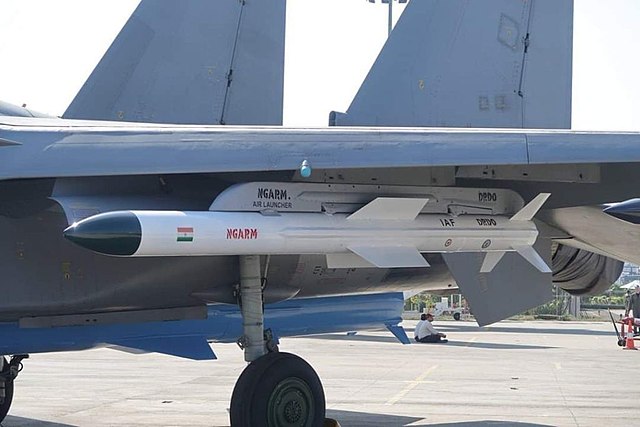The AGM-114 Hellfire is an American air-to-surface missile (ASM) first developed for anti-armor use, later developed for precision drone strikes against other target types, especially high-value targets. It was originally developed under the name "Heliborne laser, fire-and-forget missile", which led to the colloquial name "Hellfire" ultimately becoming the missile's formal name. It has a multi-mission, multi-target precision-strike ability and can be launched from multiple air, sea, and ground platforms, including the MQ-1 Predator and MQ-9 Reaper. The Hellfire missile is the primary 100-pound (45 kg) class air-to-ground precision weapon for the armed forces of the United States and many other nations. It has also been fielded on surface platforms in the surface-to-surface and surface-to-air roles.
A model of Longbow Hellfire's components
M1A1 Abrams main battle tank destroyed by friendly fire in 1991 Gulf War; one Abrams is thought to have been accidentally set on fire by a Hellfire missile fired from an Apache helicopter.
AGM-114 Ground Launched Hellfire-Light (GLH-L) missile system on a modified HMMWV chassis
Israeli Air Force Squadron 190 AH-64A Peten Launched Hellfire missile, Gaza–Israel clashes (November 2018)
An air-to-surface missile (ASM) or air-to-ground missile (AGM) is a missile designed to be launched from military aircraft at targets on land or sea. There are also unpowered guided glide bombs not considered missiles. The two most common propulsion systems for air-to-surface missiles are rocket motors, usually with shorter range, and slower, longer-range jet engines. Some Soviet-designed air-to-surface missiles are powered by ramjets, giving them both long range and high speed.
A pilot inspects an AGM-65 Maverick missile on his A-10 Thunderbolt II.
The RAF's Brimstone missile is a fire and forget anti-tank missile.
A Taurus KEPD 350 cruise missile of the German Luftwaffe.
The Indian Air Force's Rudram-1 is an Anti-radiation missile.








